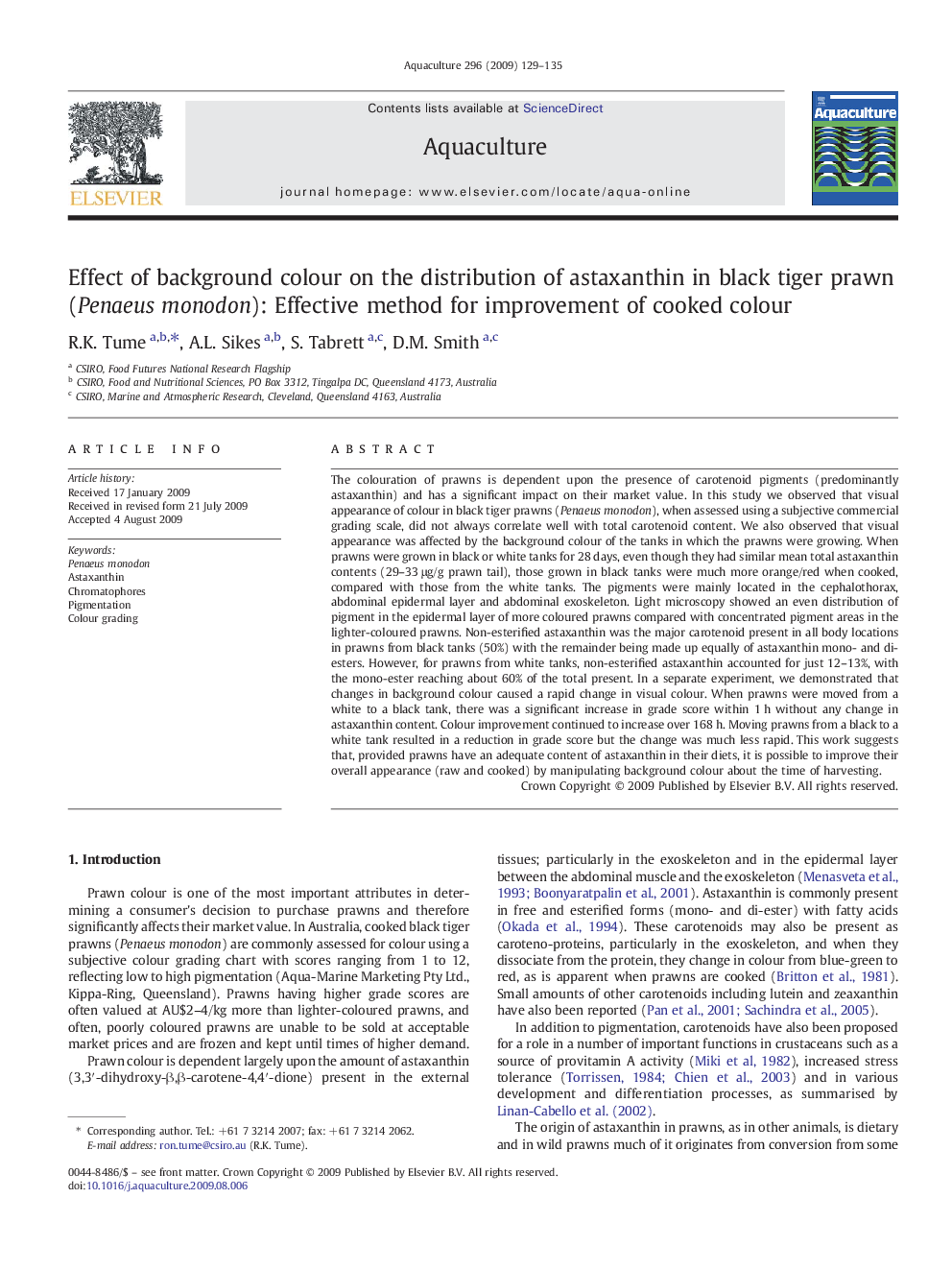| Article ID | Journal | Published Year | Pages | File Type |
|---|---|---|---|---|
| 2423891 | Aquaculture | 2009 | 7 Pages |
The colouration of prawns is dependent upon the presence of carotenoid pigments (predominantly astaxanthin) and has a significant impact on their market value. In this study we observed that visual appearance of colour in black tiger prawns (Penaeus monodon), when assessed using a subjective commercial grading scale, did not always correlate well with total carotenoid content. We also observed that visual appearance was affected by the background colour of the tanks in which the prawns were growing. When prawns were grown in black or white tanks for 28 days, even though they had similar mean total astaxanthin contents (29–33 μg/g prawn tail), those grown in black tanks were much more orange/red when cooked, compared with those from the white tanks. The pigments were mainly located in the cephalothorax, abdominal epidermal layer and abdominal exoskeleton. Light microscopy showed an even distribution of pigment in the epidermal layer of more coloured prawns compared with concentrated pigment areas in the lighter-coloured prawns. Non-esterified astaxanthin was the major carotenoid present in all body locations in prawns from black tanks (50%) with the remainder being made up equally of astaxanthin mono- and di-esters. However, for prawns from white tanks, non-esterified astaxanthin accounted for just 12–13%, with the mono-ester reaching about 60% of the total present. In a separate experiment, we demonstrated that changes in background colour caused a rapid change in visual colour. When prawns were moved from a white to a black tank, there was a significant increase in grade score within 1 h without any change in astaxanthin content. Colour improvement continued to increase over 168 h. Moving prawns from a black to a white tank resulted in a reduction in grade score but the change was much less rapid. This work suggests that, provided prawns have an adequate content of astaxanthin in their diets, it is possible to improve their overall appearance (raw and cooked) by manipulating background colour about the time of harvesting.
